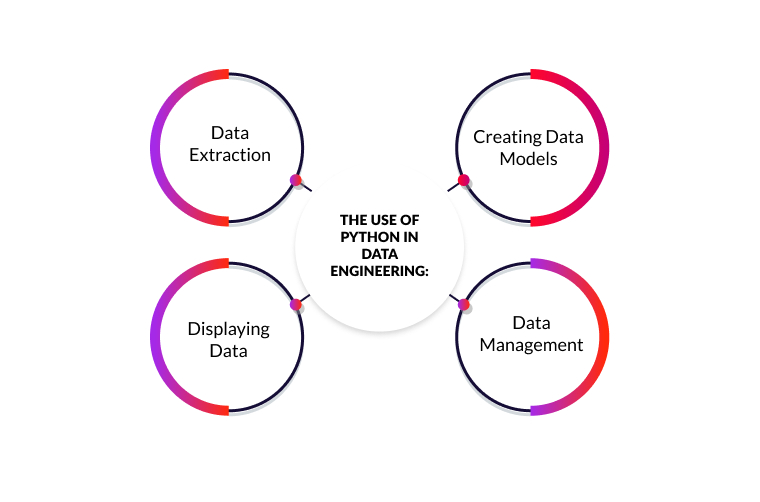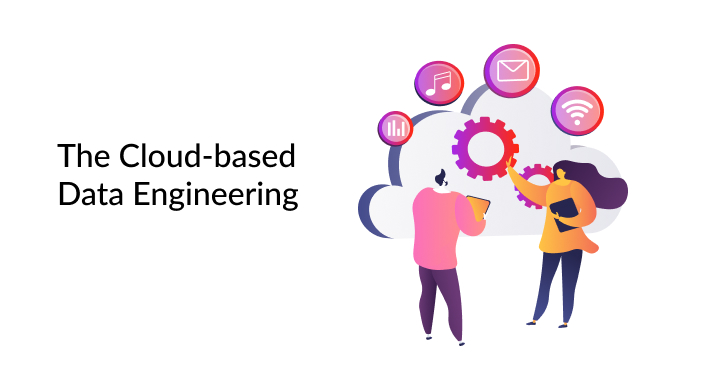Python is so widely used programming language, it even took the top spot in the Popularity of Programming Language index. Participants of Stack Overflow in 2021 claimed Python as the most demanded and third most popular programming language.
Python is also the preferred language for data scientists and an excellent substitute for specialized languages like R for artificial intelligence learning, for example. It is commonly referred to as the “language of data” and is essential for data engineering. In this article, we will go through the benefits and uses of Python in data engineering. Want to discover more? Contact us for a consultation.
The Reasons for DATA ENGINEERING with Python
Python for Data Engineering primarily entails Data Wrangling, which includes automation, API interaction, small-scale extract-transform-load, reshaping, aggregation, and connecting several sources. Here are several reasons for using Python:
- The finest language for data engineering is Python. One of the most used data file formats, .csv, is supported by its standard library for simple processing.
- Tools for data engineering such as Apache Airflow and Apache NiFi use directed acyclic graphs. DAGs are nothing more than task-specific Python codes. Data engineers can use these technologies effectively by understanding Python.
- Python is simple to learn and available to all users at no cost. It is strongly backed by a vibrant tech community.
- It is frequently necessary for a data engineer to use APIs to extract data from databases. Python provides a library called JSON-JSON that can handle this kind of data.
- Luigi! The widely regarded Python module that is an excellent data engineering tool.
The Use of Python in Data Engineering
Data users, such as data researchers, analysts, and managers, can examine the available information in a safe, accurate, timely, and comprehensive manner thanks to data engineering. So let's investigate the use of Python for data engineering:
Data Extraction
Python is used to gather data from APIs or through spider bots. Additionally, Python knowledge is needed for planning and organizing ETL tasks using platforms like Apache Airflow.

Creating Data Models
With frameworks like Keras, TensorFlow, PyTorch, etc. Python is utilized to conduct machine learning or deep learning jobs. In order to efficiently interact across many teams, Python is a perfect programming language for Data Engineering.
Displaying Data
There are many data surfacing approaches, such as putting data into a report or dashboard or just providing data as a service. Setting up APIs to surface the data or models using frameworks like Flask or Django requires Python for Data Engineering.
Data Management
The handling of tiny datasets is possible thanks to Python libraries like Pandas. Additionally, the PySpark interface offered by Python for Data Engineering enables handling big datasets.
The Cloud-based Data Engineering
The problems that data engineers face on a daily basis are similar to those that data scientists face. The focus of both specialities is processing data in its various formats. However, in case of data engineering, we place a greater emphasis on commercial procedures like data pipelines and extract-transform-load operations. Regardless of whether the solution is intended for an on-premise or cloud platform, they must be strong, trustworthy, and effective.
Python has shown itself to be an effective cloud-based solution. When it comes to providing answers to various issues, the three main players—Amazon Web Services (AWS), Google Cloud Platform (GCP), and Microsoft Azure— all welcome Python users.  Serverless computing makes it possible to start data ETL procedures when they are needed, without having to pay for a server that is always operating. Thus, the processing infrastructure is transparently shared in order to reduce administration to an absolute minimum and optimize expenses. Relevant Application Programming Interfaces (APIs) are available for each platform for the purposes of controlling and managing cloud resources. APIs are particularly beneficial for programmable data retrieval and job trigger processes. The ones created by AWS, GCP, and Azure are readily packaged in Python Software Development Kits.
Serverless computing makes it possible to start data ETL procedures when they are needed, without having to pay for a server that is always operating. Thus, the processing infrastructure is transparently shared in order to reduce administration to an absolute minimum and optimize expenses. Relevant Application Programming Interfaces (APIs) are available for each platform for the purposes of controlling and managing cloud resources. APIs are particularly beneficial for programmable data retrieval and job trigger processes. The ones created by AWS, GCP, and Azure are readily packaged in Python Software Development Kits.
Therefore, Python is extensively accessible on all cloud-based platforms. The language is also an effective tool for carrying out the duties of a data engineer, who must set up data pipelines and ETL jobs to gather data from various sources (ingestion), process it or aggregate it (transformation), and then make it accessible to users.
Wrapping Up
Python has a wide range of uses in data engineering, being an essential tool for all data engineers. It makes data engineering simple and quick. As previously mentioned, Python is compatible with a number of Big Data solutions, including Apache Airflow, Apache NiFi, Apache Spark, and others. This programming language therefore plays a big part in data engineering.
We provide data engineering outsourcing services in addition to web development because Python can be used to implement and operate the majority of necessary technologies and processes.
Feel free to contact us to discuss any data engineering needs you may have. We would be pleased to speak with you and learn how to be of assistance.
